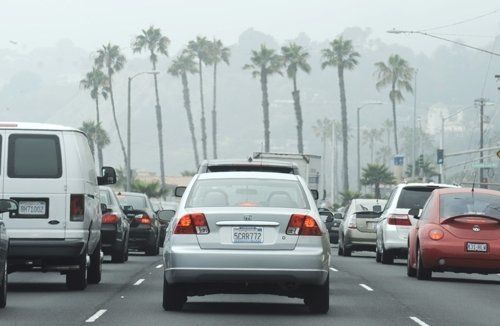
 "The poor are world traffic's victims," read a recent headline in a Swedish newspaper. The UN World Health Organization's latest report is a country-by-country survey of traffic injuries and deaths, and the results are sobering.
"The poor are world traffic's victims," read a recent headline in a Swedish newspaper. The UN World Health Organization's latest report is a country-by-country survey of traffic injuries and deaths, and the results are sobering.
Traffic is deadly -- 1.2 million people are killed annually in traffic accidents. Traffic accidents are the world's 9th leading cause of death, behind lung cancer and ahead of diabetes, and are the leading cause of death for those between five and 44 years old.
Most measures up to now, WHO says, have been on improving safety to vehicle occupants. Now the focus should shift to what it calls "vulnerable road users" -- i.e. pedestrians, cyclists and motorcyclists.
Naked Cyclists who braved the elements last weekend couldn't agree more. Some people have a hard time understanding what being in your birthday suit has to do with bicycle advocacy. Cyclists themselves, especially those braving city streets, totally get it.
While the Washington Post's headline: "Half of Traffic Fatalities Not in Cars," points to this "naked" vulnerability of walkers and bikers, it kind of fails to reveal that while fewer deaths are now occurring in the cars themselves, the vast majority of fatalities are due to cars and other vehicles.
Speed is only one of the five main factors contribution to traffic injuries and death -- the others are drunk driving, lack of helmets, and lack of seat belts and child restraints -- but it is a biggie. Only 29% of countries set speed limits of 31 miles per hour or less on urban roads.
If current trends continue, about 2.4 million people could be killed each year on the road by 2030, according to the report. It will move up the list to become the world's fifth leading cause of death. It's not an intractable problem, though.
Calming traffic by reducing speeds isn't only safer, it's also greener, saving gas and millions of pounds of pollutants. In Tom Vanderbilt's book Traffic, it is actually 20 miles per hour that is the considered the maximum speed at which drivers, cyclists, and pedestrians can have eye contact and still respond safely to each others' signals in a shared streets environment.
Which just happens to be around the maximum speed of an e-bike. Naked e-biking, everyone?
Read more about speed, and traffic calming at TreeHugger
::The Inalienable Right to Speed
::TreeHugger Homework: Drive the Speed Limit
::55 MPH: It's Time to Bring it Back
::Can Painting the Pavement Make Streets Safer?
::Streetcode Proposes New Rule for the Road: Heaviest Vehicle Bears Weight of Responsibility